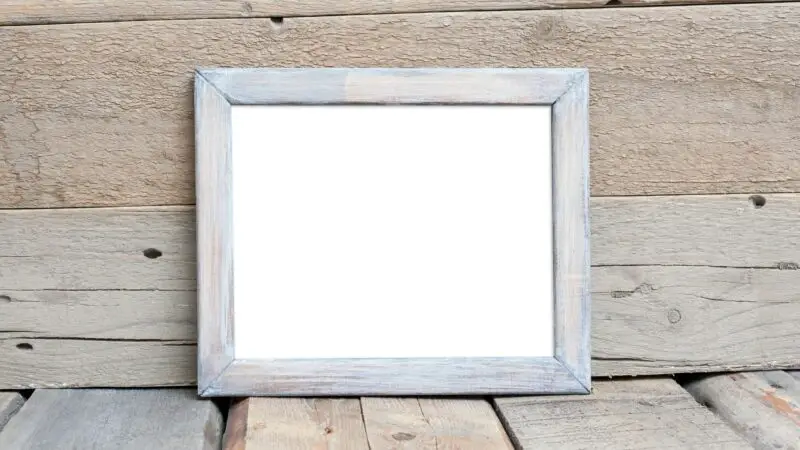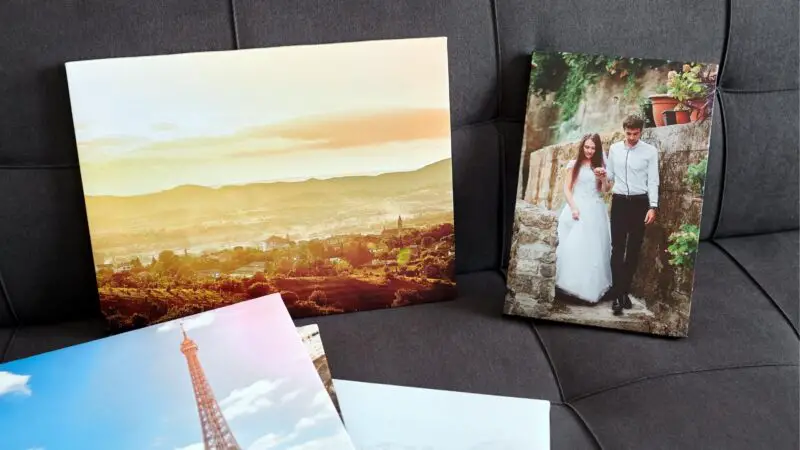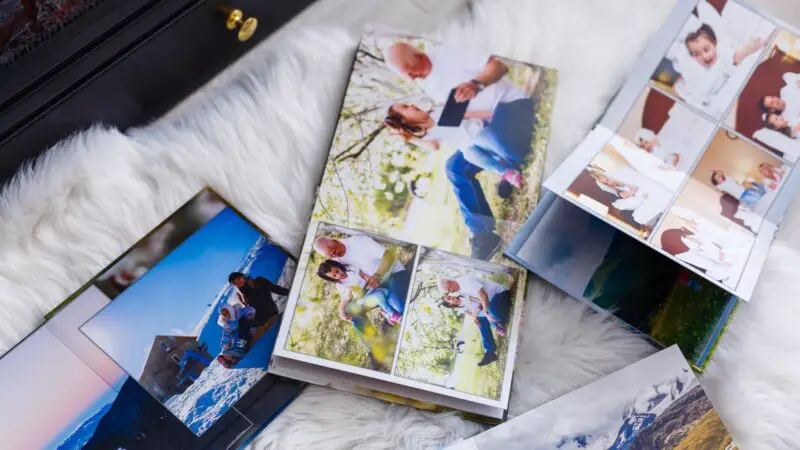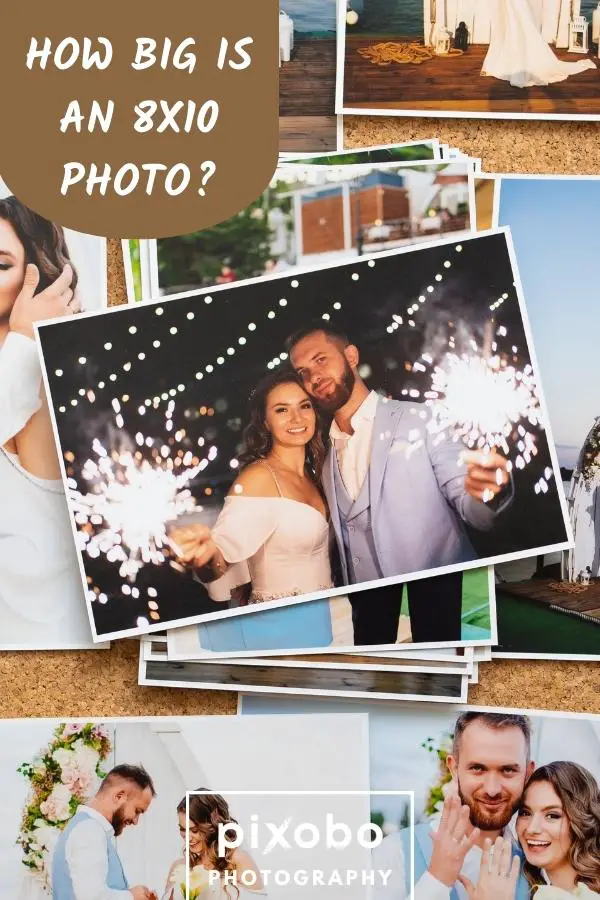If you are into photography and printing photos, you may be used to printing small photo sizes, especially 4×6. But what if you or your client wants larger photo prints, such as 8×10? So, how big is an 8×10 photo?
To give you an idea, countless photos from the September 11 attacks (9/11) were printed at 8×10. Famous art prints are also at 8×10. The actual size of an 8×10 photo is 8 inches by 10 inches.
Printing an 8×10 photo may look simple, but it is not. It’s not just about taking a picture and bringing them to a photo printing service and then telling them to print it at 8×10.
If you want your 8×10 photos to have the best quality, there are some significant factors involved. This article will teach you about 8×10 photos, including some helpful tips.
Table of Content
What Is the Actual Size of an 8×10 Photo?

The actual size of an 8×10 photo is 8 inches by 10 inches. For comparison, it is slightly smaller than an American letter paper size (8.5 x 11 inches) and an A4 paper size (8.27 x 11.69 inches).
To avoid confusion, most photo printing services in the US also call 8×10 photo papers 8R photos. In Japan, 8R photos are called 6P photos and not 8P.
How Big Is an 8×10 Photo in Centimeters and Millimeters?
Since 8×10 photos are in inches, this unit of measurement is in the British Imperial system that is used only in three countries – the United States of America, Liberia, and Myanmar.
All other countries use the Metric system, wherein millimeter, centimeter, or meter is used for measuring length instead of inches. 1 inch is equal to 2.54 cm.
To convert 8×10 photos in centimeters, multiply 8 and 10 by 2.54. The result is 8 x 2.54 = 20.32 and 10 x 2.54 = 25.4 cm, or 20.32 x 25.4 cm. Since 1 cm is equal to 10 mm, 8×10 photos in millimeters is 203 × 254 mm.
In the US, you can find 8×10 photo frames. But in the UK, the closest photo frame size is 20×25 cm, which is a bit smaller than 8×10.
Is 8×10 a Standard Photo Print Size?

8×10 is a standard photo print size, but it is only one of them. Other standard photo sizes include 4×6 (most common), 5×7, 8.5.×11, 12×18, 18×24, and 24×36. With all of these dimensions, no part of the photo will be cropped.
Other photo print sizes include those with equal sides, such as 1×1, 2×2, 4×4, and 5×5. Wallet size photos are 2.5×3.5.
What Is the Aspect Ratio of 8×10 Photos?
The aspect ratio of 8×10 photos is 4:5. In photography, the aspect ratio is described as the proportional relationship between the length and height of an image.
For 8×10 photos, it means that for every 4 inches of length, the equivalent height is 5 inches. This is why an 8×10 photo has an aspect ratio of 4:5, which is also commonly used in Instagram photos.
What’s the Difference Between PPI and DPI?

In a nutshell, image resolution is the number of pixels (pixel elements) per square inch in a digital image. Expressed in PPI (pixels per inch), it is also the total number of pixels required to print the image. Images with a higher resolution have more PPI and higher image quality than those with a lower resolution since they have finer details.
Meanwhile, the standard print resolution is 300 DPI (dots per print). The main difference between PPI and DPI is that the latter is the resolution value of a physical printer.
In short, PPI is used only in digital images and does not affect the printed image whatsoever, while DPI is used only in printed images and has no effect on the digital image at all.
What Is the Best Resolution For Printing 8×10 Photos?
A good resolution for printing 8×10 photos is 1440 x 1800 or 2.6 MP (megapixels). For better quality 8×10 photos, use a resolution of 1920 x 2400 or 4.6MP.
But if you want the highest quality of image, the best resolution for 8×10 photos is 2400 x 3000 or 7.2 MP. As you can see, this resolution was obtained by multiplying 8 and 10 by 300 DPI.
What Is the Best Resolution For 8×10 Photos on Websites?
Larger images on websites can cause slow loading of pages compared to smaller images. But since it is the resolution that matters on web pages and not the physical size, using 8×10 photos is not a problem.
According to an old myth, the standard resolution of images on web pages is 72 PPI. But it is not true at all; it’s the pixel count that matters.
A 77 PPI photo, a 300 PPI photo, and a 1000 PPI photo will all appear on the screen at the same size. They also have the same file size, which means that any PPI won’t affect the loading speed of a website.
Note also that different devices have different screen resolutions, which is also why there is no standard resolution for images on websites.
Again, the size of digital images is not the same as that of physical or printed images. It means that PPI only affects the size of printed images, not digital images.
So for 8×10 photos on customized websites such as WordPress and Squarespace, the pixel count mainly depends on your website’s requirements or recommendations.
Can You Convert Any Photo Size to 8×10?
You can convert any photo size to 8×10. In fact, there are a lot of free image resizers online. You can also resize photos in Photoshop.
Note, however, that resizing photos involved cropping them. It means that some details of your photos will be lost, especially those very near to the edges. The subject may also be out of the center.
Can You Print 8×10 Photos on A4 Size Papers?
You can print 8×10 photos on A4-size papers. As mentioned above, the size of A4 papers is 8.27 x 11.69 inches. Therefore, one 8×10 photo will fit on one A4 paper.
In fact, the A4 paper will have an extra 0.27 inches (6.85 mm) on the shorter side and 0.69 inches (17.52 mm) on the longest side. If you don’t need those extras, you can cut them.
Is It Possible to Take 8×10 Photos?
It is possible to take 8×10 photos, but it can be expensive and challenging. First of all, you cannot use a DSLR or mirrorless camera.
On the other hand, there are a few mirrorless cameras that use a 4:5 aspect ratio, such as the Nikon Z7. But in case you don’t know, 8×10 is the largest common film format. Hence, you need an 8×10 camera.
- New larger Z mount for revolutionary optical performance
- Nikon-designed 45.7MP backside Illuminated image sensor with no optical low pass filter (OLPF)
- 493-Point on-sensor phase detect AF system and up to 9 fps; Detection Range: Minus-1 to Plus-19 EV (Minus-4 to plus-19 EV with low-light AF) Detection range (ISO 100, f/2.0 lens, 20 °C/68 °F)
Also known as 4×5 film cameras, 8×10 cameras are now rare and pretty expensive. You will also need a bigger lens and a strong, large tripod.
Not to mention, the cost of 8×10 negatives and developing them are not cheap. In 2020, film photographer Willem Verbeeck posted a YouTube video taking photos of strangers using an 8×10 camera.
Important Tips Before Printing 8×10 Photos
As stated earlier, 8×10 photos use an aspect ratio of 4:5, which is not as common as the 3:2 aspect ratio. And since no DSLR camera uses a 4:5 aspect ratio, printing 8×10 photos requires cropping and resizing them, which could be challenging. So unless you are using an 8×10 film camera, here are some helpful tips before printing 8×10 photos:
- When taking a photo, place your subject at the center of the frame and make the background wider.
- Avoid using the rule of thirds technique, wherein the subject is placed at the left or right third of your image.
- Most printing services cut around 3 mm on each side of photos without telling you. This is also why you should avoid placing important details near the edges.
- To avoid blur during slower shutter speeds, use a tripod. Blur is more likely seen in larger images than in smaller photos.
- Be careful when cropping your photos. If you will go to a photo printing service, tell them which portion to be cropped.
- Choose high-quality photo paper for printing.
As you can see, taking and printing 8×10 photos can be demanding. They can also be expensive if you will use film cameras.
But if you are a photo enthusiast or planning to be a professional photographer, experimenting with larger photo prints can surely help you improve your craft and creativity. After all, the art of photography has no limits.


